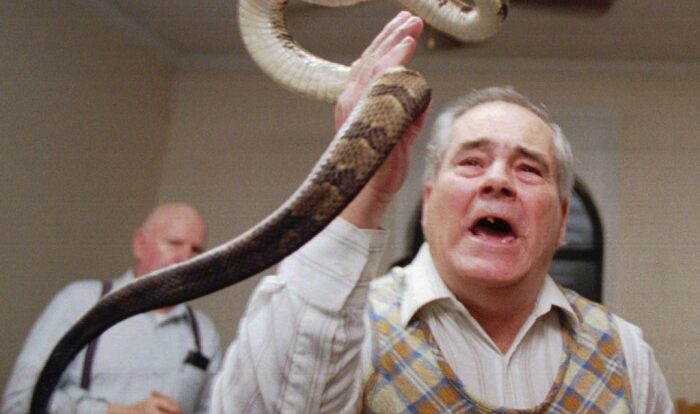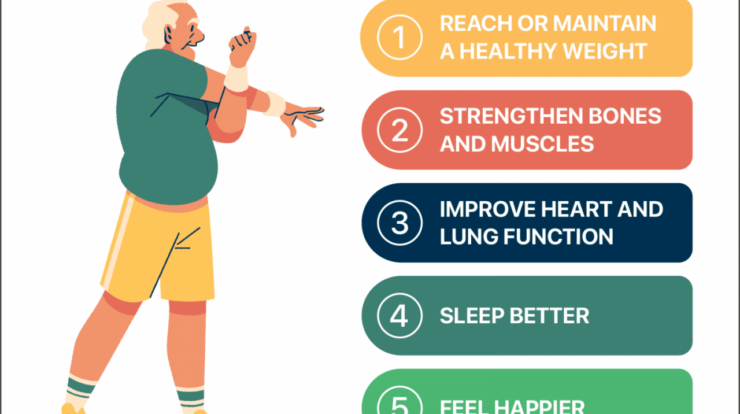
How to handle his snake yumi sin and fit kitty – Yo, check it out! If you’re into slithery reptiles, then you need to know how to handle your snake, Yumi Sin, and fit kitty. We’re dropping some knowledge bombs on proper techniques, bite prevention, enclosure design, feeding tips, and health care.
Let’s dive in!
Snakes can be awesome pets, but they’re not all cuddly puppies. Yumi Sin, in particular, can pack a punch, so it’s crucial to know what you’re doing. We’ll guide you through the dos and don’ts of snake handling, keeping you safe and your scaly friend happy.
Snake Handling Techniques

Snakes are fascinating creatures, but handling them requires utmost care and knowledge. Whether you’re an experienced herpetologist or just curious about these reptiles, it’s crucial to follow proper techniques to ensure both your safety and the well-being of the snake.
Equipment and Precautions
Before handling any snake, it’s essential to have the right equipment and take necessary precautions:
- Snake hook:A long, curved hook used to gently guide the snake’s head.
- Snake tongs:Specially designed tongs for gripping the snake’s body securely without causing injury.
- Gloves:Wear thick, leather gloves to protect your hands from bites or scratches.
- Avoid loose clothing:Loose clothing can get caught in the snake’s coils, creating a dangerous situation.
- Stay calm:Snakes can sense fear, so it’s crucial to remain calm and collected while handling them.
Handling Techniques
With the necessary equipment and precautions in place, follow these techniques for safe snake handling:
- Approach slowly:Move towards the snake slowly and avoid making sudden movements.
- Secure the head:Gently use the snake hook to guide the snake’s head away from your body.
- Grip the body:Use snake tongs to firmly grip the snake’s body behind the head.
- Support the tail:Use your free hand to support the snake’s tail, preventing it from flailing or striking.
- Keep it low:Hold the snake close to the ground to prevent it from falling and injuring itself.
Common Handling Mistakes
To avoid potential accidents, it’s crucial to steer clear of these common handling mistakes:
- Grabbing the snake directly:Never attempt to grab a snake with your bare hands, as it can result in a bite.
- Pulling the snake’s tail:This can cause the snake to panic and potentially strike.
- Overhandling:Excessive handling can stress the snake and increase the risk of bites.
- Ignoring the snake’s body language:Pay attention to the snake’s body language and respect its boundaries.
- Handling venomous snakes without proper training:Venomous snakes should only be handled by experienced professionals.
Snake Bite Prevention
Yumi sin snakes are highly venomous, and their bites can be fatal. It’s crucial to take precautions when handling them to avoid any potential risks.
To prevent snake bites, it’s essential to be aware of the snake’s behavior and avoid any sudden movements that may startle it. Always handle the snake with a hook or tongs, and never attempt to grab it with your bare hands.
Recognizing Snake Bite Signs and Symptoms
In the unfortunate event of a snake bite, it’s vital to recognize the signs and symptoms immediately. These may include:
- Sharp, intense pain at the bite site
- Swelling and discoloration around the bite
- Nausea, vomiting, and dizziness
- Difficulty breathing
- Rapid heart rate
- Numbness or tingling in the affected limb
First Aid Measures for Snake Bites
If someone is bitten by a snake, immediate first aid is crucial. Here are the steps to follow:
- Stay calm and reassure the victim.
- Immobilize the bitten limb and keep it below heart level.
- Apply a pressure bandage over the bite site.
- Clean the wound with soap and water.
- Seek medical attention immediately.
Snake Enclosure Design

Creating a suitable enclosure for your Yumi sin is essential for its well-being. The enclosure should mimic the snake’s natural habitat, providing a safe and comfortable environment.
Size
The enclosure should be large enough to allow the snake to move around freely. A good rule of thumb is to provide a space that is at least twice the length of the snake and wide enough for the snake to fully stretch out.
Temperature
Yumi sins are cold-blooded reptiles, so they rely on external heat sources to regulate their body temperature. The enclosure should have a warm side and a cool side, with a temperature gradient between 75-85°F (24-29°C).
Humidity, How to handle his snake yumi sin and fit kitty
Yumi sins also require high humidity levels to prevent dehydration and respiratory problems. The enclosure should be kept at a humidity level of 50-60%.
Substrate
The substrate, or bedding, in the enclosure should be absorbent and easy to clean. Good options include newspaper, reptile carpet, or aspen shavings.
Yo, check it, I got this snake named Yumi Sin and a cat named Fit Kitty, and let me tell you, handling them can be a trip. But then again, I’ve heard that increasing insurance agent productivity can be just as tricky.
It’s all about finding the right moves, you know? Just like with Yumi Sin, you gotta keep her close but not too close, and with Fit Kitty, you gotta give her space but not too much. It’s a balancing act, man.
Hiding Places
Yumi sins need places to hide to feel secure. Provide several hiding places in the enclosure, such as caves, tunnels, or boxes.
Yo, check it, if you can handle your snake Yumi Sin and fit kitty, then you got what it takes to increase your insurance agent productivity. Hit up this link to level up your game and make that cheddar. After that, it’s back to the grind, showing Yumi Sin and your kitty who’s boss.
Water Dish
Provide a shallow water dish in the enclosure. The dish should be large enough for the snake to soak in.
Yo, handling Yumi’s snake and Kitty’s fit can be a hassle, but you can boost your productivity like an insurance agent on fire! Check out how to increase insurance agent productivity for the lowdown on crushing it in the sales game.
Then, get back to Yumi’s slithery friend and Kitty’s sassy attitude with renewed vigor.
Decorations
Adding some decorations to the enclosure can make it more visually appealing and provide additional enrichment for the snake. Avoid sharp objects or anything that could harm the snake.
Snake Feeding and Nutrition
Yumi sin, also known as the Japanese rat snake, has specific dietary requirements that must be met to ensure its health and well-being. Understanding the snake’s nutritional needs is crucial for responsible snake ownership.
Types of Food
Yumi sin are carnivorous snakes and their diet primarily consists of rodents. Appropriate prey items include mice, rats, and small rabbits. The size of the prey should be appropriate to the size of the snake, and it’s generally recommended to offer prey that is no larger than 1.5 times the widest part of the snake’s body.
Preparing and Feeding
Before feeding the snake, it’s important to thaw frozen prey items thoroughly. Live prey should be avoided as they can injure the snake. Use tongs or forceps to offer the prey to the snake. Hold the prey securely and gently place it near the snake’s head.
Yo, check it, I got this snake Yumi Sin and a kitty that’s as fit as a fiddle. I know it’s a weird combo, but hey, they’re both my babies. Now, let’s talk about something a little more serious, like how to increase insurance agent productivity.
This link got you covered with tips and tricks to boost your game. But don’t forget, it’s all about finding a balance between work and snuggles with your scaly and furry friends. Trust me, Yumi Sin and my kitty would approve.
Most Yumi sin will readily accept food, but if the snake refuses to eat, do not force it. Wait a few days and try again.
Feeding Schedule
The feeding schedule for Yumi sin varies depending on their age and size. Young snakes typically eat more frequently, while adult snakes may only need to eat once or twice a month. A general guideline is to feed young snakes every 5-7 days, and adult snakes every 10-14 days.
Supplements
In some cases, it may be necessary to provide calcium supplements to Yumi sin. This is especially important for young snakes that are still growing. Calcium supplements can be sprinkled on the prey before feeding.
Snake Health and Veterinary Care

Keeping your Yumi sin healthy is crucial for its well-being and longevity. Understanding common health issues and the importance of veterinary care will help you provide the best care for your scaly companion.
Common Health Issues
- Respiratory infections: Caused by bacteria or viruses, these infections can lead to coughing, sneezing, and difficulty breathing.
- Digestive issues: Improper feeding or parasites can cause digestive problems such as vomiting, diarrhea, and loss of appetite.
- Skin infections: Bacterial or fungal infections can cause skin lesions, scales, and irritation.
- Parasites: Internal or external parasites, like worms or mites, can affect a snake’s health and well-being.
Regular Veterinary Checkups
Regular veterinary checkups are essential for early detection and treatment of health issues. A vet can perform a physical exam, fecal exam, and bloodwork to assess your snake’s overall health and detect any underlying conditions.
Signs of Illness
- Lethargy and loss of appetite
- Unusual breathing patterns
- Skin lesions or discoloration
- Vomiting or diarrhea
- Neurological symptoms, such as tremors or seizures
If you notice any of these signs, it’s crucial to seek professional help from a veterinarian immediately.
Ending Remarks
There you have it, fam! Handling your snake, Yumi Sin, and fitting kitty doesn’t have to be a pain in the tail. Follow these tips, and you’ll be a snake whisperer in no time. Remember, knowledge is power, and when it comes to snakes, power means staying safe.
Keep your head up, your hands steady, and your respect for these amazing creatures close at hand.
Quick FAQs: How To Handle His Snake Yumi Sin And Fit Kitty
How often should I feed my Yumi Sin?
It depends on their age and size, but generally, adult Yumi Sins eat every 7-10 days.
What’s the best way to handle a Yumi Sin?
Always approach calmly and support their body. Use a snake hook for extra safety.
What are the signs of a snake bite?
Pain, swelling, redness, and nausea. Seek medical attention immediately.






